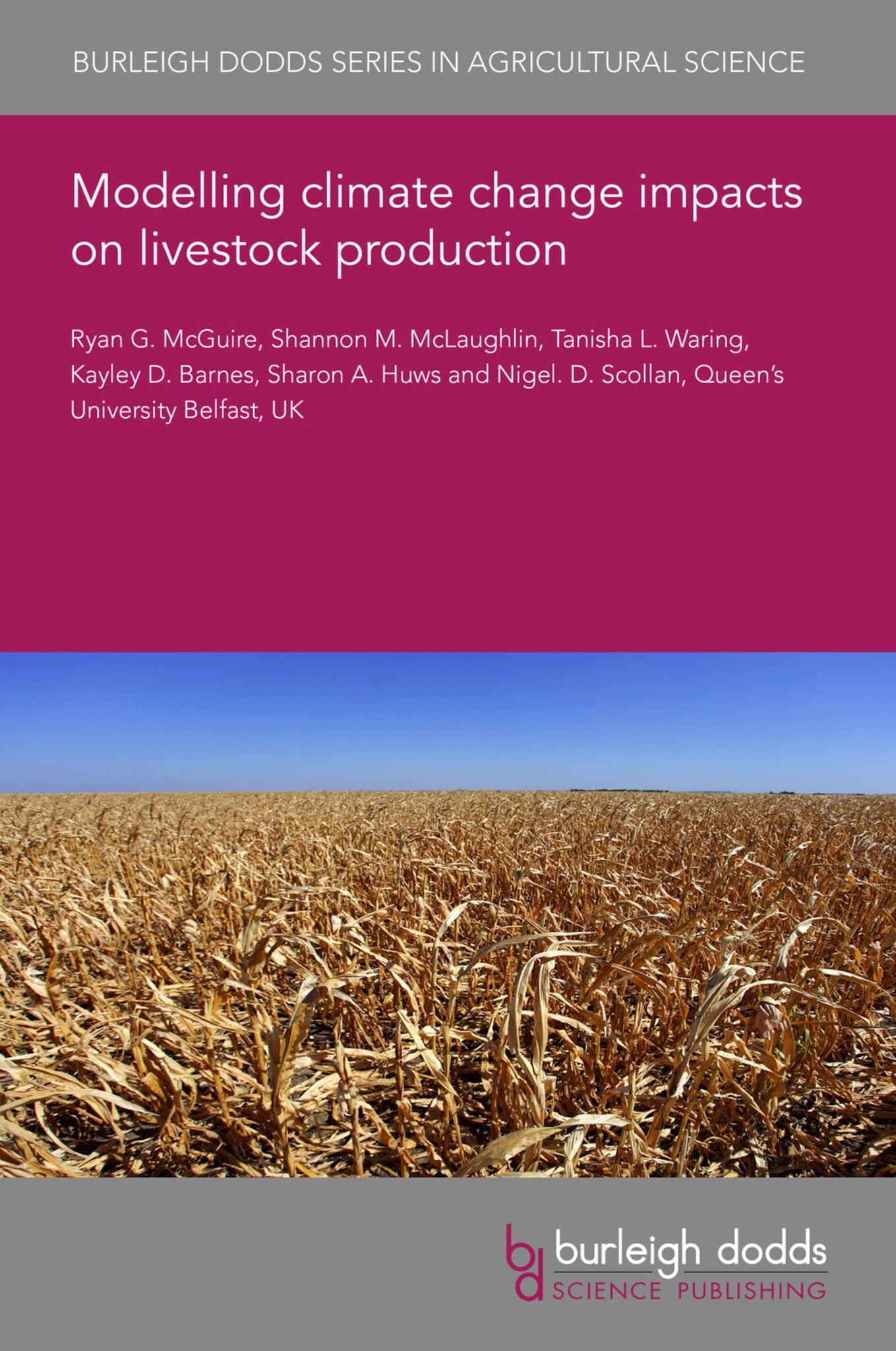We're sorry. An error has occurred
Please cancel or retry.
Modelling climate change impacts on livestock production

Some error occured while loading the Quick View. Please close the Quick View and try reloading the page.
Couldn't load pickup availability
- Format:
-
24 July 2023

As other sectors continue to decarbonise, achieving climate change targets is particularly challenging for agriculture. This is primarily the result of livestock production systems (LPS), namely intensive ruminant production systems. LPS account for ~14.5 percent of all anthropogenic GHG emissions, with cattle alone accounting for 62% of this total. After outlining their crucial role within global food security, economic growth, employment, and society, this chapter argues the need for rapid implementation of climate mitigations for LPS. More specifically, it places focus on two of the most crucial mitigation measures available for LPS, enteric methane mitigation (such as breeding and dietary interventions) and carbon sequestration and storage to deliver net zero LPS.

TECHNOLOGY & ENGINEERING / Agriculture / Sustainable Agriculture, Sustainable agriculture, TECHNOLOGY & ENGINEERING / Agriculture / Agronomy / Crop Science, TECHNOLOGY & ENGINEERING / Agriculture / Animal Husbandry, SCIENCE / Global Warming & Climate Change, Agricultural science, Climatology and climate modelling, Climate change, Animal husbandry

- 1 Introduction
- 2 Enteric methane mitigation
- 3 Grassland agriculture: a net zero livestock system
- 4 Conclusion and future trends
- 5 Where to look for further information
- 6 References



